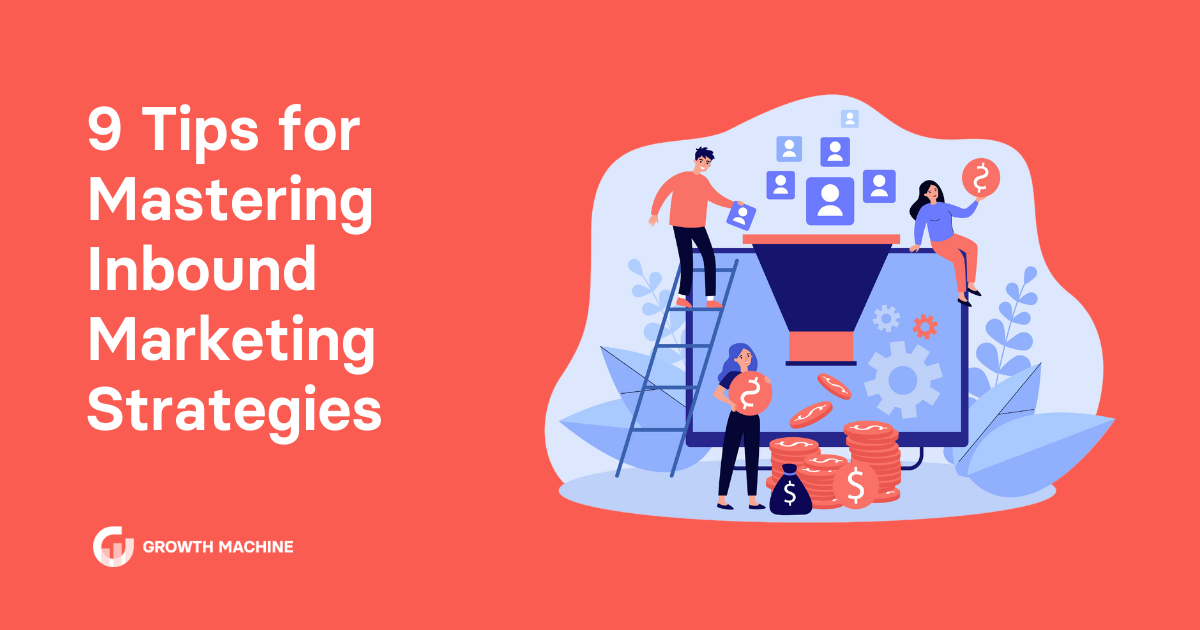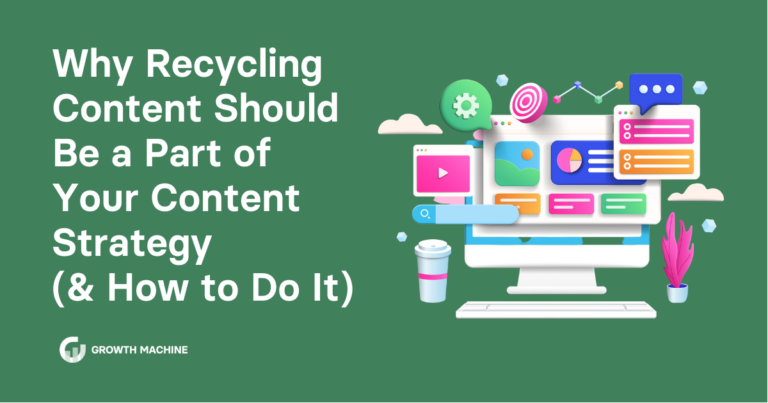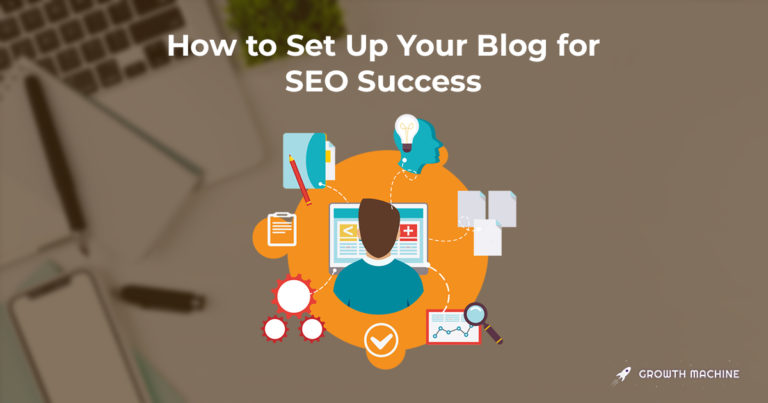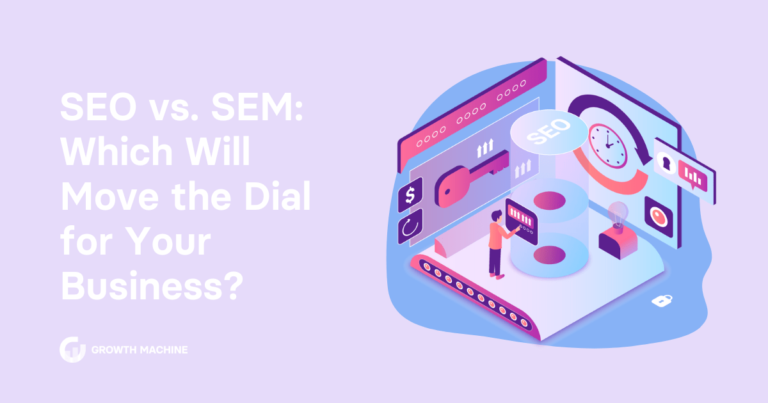9 Tips for Mastering Inbound Marketing Strategies
Whether you’re the proud owner of a small business or you’ve just started a fledgling startup, it’s important to get the word out about your business. Digital marketing is, hands-down, the easiest and most affordable way to turn more heads and boost sales.
But which digital marketing strategies are actually worth your time and money?
If you’ve just started marketing your business, inbound marketing campaigns are the way to go. With inbound campaigns, you subtly promote your business to potential customers via social media, ads, email, influencers, and plenty of other channels.
It’s time to make your biz stand out. Check out this guide to learn how inbound marketing works and the nine most popular inbound marketing tactics to jumpstart business growth.
What Is Inbound Marketing?
Inbound marketing is a methodology where you create and share valuable content tailored to a specific audience. The goal isn’t to push your product or company on them, but to organically attract their attention by offering juicy information and valuable experiences.
Instead of pushing your message out, you draw customers in.
Outbound marketing is the opposite of inbound marketing. This is when you use tactics like cold calling or billboard ads to indiscriminately push your message onto anyone you can get ahold of.
Outbound strategies certainly can work, but consumers overwhelmingly prefer inbound marketing because it gives them time to think about your offerings and do their own research.
Successful inbound marketing campaigns will help your business:
- Boost brand awareness
- Build trust with your target audience
- Improve lead generation
- Increase conversion rates and sales
Instead of taking a “spray and pray” approach, inbound marketing focuses on creating relationships. You meet your audience where they are and solve their deepest pain points.
What’s an Example of Inbound Marketing?
Let’s say you own a startup that sells cool kitchen gadgets. A successful inbound marketing campaign might include these touchpoints:
- Creating a blog on your website featuring recipes, kitchen hacks, and tutorials
- Optimizing each blog post for search engines
- Resharing blogs on Instagram, Pinterest, and Facebook
- Sending a monthly email newsletter with free cooking e-books
- Going live on social media with a celebrity chef or foodie influencer
These methods promote your kitchen gadgets in a more subtle way. You’re providing valuable, expert information and even entertainment, which shoppers appreciate way more than a hard sales pitch.
How to Do Inbound Marketing
You’ll start attracting more customers in no time with the right inbound strategy. Follow these steps to start doing inbound marketing for your business.
1. Conduct Audience Research First
Your inbound marketing strategy depends entirely on who you’re speaking to. After all, a B2B C-suite audience is going to respond differently to an email than a Gen Z college kid.
For starters, log all of your existing customer data in a customer relationship management (CRM) platform like HubSpot. If you don’t have existing customer data, you can learn more about your audience by:
- Scoping out the competition
- Sending surveys
- Conducting one-on-one interviews
- Checking Google Trends
- Looking at your social media followers
- Reading online forums
Use segmentation to categorize all your target audience into buyer personas based on shared characteristics. When you understand each persona’s pain points, you’ll better understand how to attract more qualified leads on the right platforms.
2. Make Brand Guidelines—and Follow Them
Most inbound strategies require marketing your biz on more than one platform. It’s important to maintain a consistent tone of voice throughout your campaigns, no matter how you promote yourself.
Create clear branding guidelines to maintain a consistent brand personality online. These guidelines should include guidance on grammar, word choice, fonts, and color palettes.
3. Create Valuable Content
Useful content is the bedrock of inbound marketing. The more valuable content you create for your followers, the more likely they are to reward you with their time and attention.
Create different types of content based on your target audience’s preferences. That might include:
- Infographics
- Whitepapers
- Case studies
- Podcasts
- Webinars
Consult your buyer personas to see which content formats and channels would work best for your audience.
Content creation is important for inbound marketing, but creating that content isn’t always a piece of cake. You need to publish relevant content that positions you as an authority and helps you dominate the search engines—that’s not an easy task for a small business.
Press the “easy” button and work with Growth Machine instead. Our SEO experts write long-form blogs and post them to your site consistently so you build a loyal following over time. See how we took a brand-new website from zero to 150,000 monthly visitors in just eight months.
4. Invest in Search Engine Optimization (SEO)
SEO works in tandem with high-quality content to help you stand out on search engines. Sixty-eight percent of all web traffic starts with a search engine, so optimizing your site for SEO is a smart way to stand out.
Keep in mind that SEO isn’t a get-rich-quick scheme. It requires months of effort and constant optimization to steadily boost your rankings. If you need to see results within just a few months, work with an SEO expert like Growth Machine to create SEO-optimized content that piques searchers’ interest.
5. Leverage Social Media
You went through the trouble of creating quality content—share it with the world! Join the social networks that your buyer personas frequent the most. For example, a B2B marketing campaign would focus more on LinkedIn.
It’s great if you can check your social media marketing channels at least once a day, but that isn’t always practical for small businesses. If that’s the case, use marketing automation tools like Buffer to batch-schedule social posts all at once.
6. Nurture Leads Through Email Marketing
Did you know that email marketing is the best way to follow up with potential customers? Even a once-monthly email newsletter has the power to boost brand recall and foster deeper relationships with your audience.
To encourage more people to join your email list, offer a free e-book, guide, online course, or other enticing freebie on your website. People are often more than happy to opt into your email list if they think your content is informative, entertaining, or valuable.
From there, it’s as easy as engaging these subscribers with monthly or weekly email campaigns. Send them valuable guides, exclusive content, and product sneak peeks to maintain their interest.
7. Collaborate With Influencers
Influencers are content creation royalty. From Instagram to Snapchat to TikTok, influencers have their finger on the pulse of what’s hot (and what’s not) across the web.
Influencer marketing is an effective inbound marketing strategy because it allows you to borrow an influencer’s clout and promote your offerings to an audience primed for engagement.
You don’t have to start DMing influencers yourself, either. Join influencer marketing platforms like TapInfluence or Klear to source the perfect creators for your campaigns.
Most businesses treat influencer collabs as one-offs, but this marketing method benefits from repeat campaigns. Find influencers who are open to more long-term engagements. Consumers rarely take action when they hear about something for the first time, so repeated exposure could work wonders for your brand.
8. Utilize Paid Advertising
Paid ads are the most expensive of all inbound marketing tactics. We recommend investing in paid ads only after you’ve maxed out your other digital marketing avenues.
But if you want to take your biz to the next level, paid ads are a great next step. Promote yourself on Google Ads or Facebook Ads to generate more traffic to your site.
9. Measure Your Results
As with any marketing campaign, you need to measure your inbound marketing efforts regularly. Consult social media analytics or free marketing tools like Google Analytics for a better understanding of your metrics.
If you played your cards right, you should see an improvement in:
- Total site visits
- Time on page
- Organic traffic
- Conversions
You don’t need to obsessively monitor your metrics, but checking them a few times a month will tell you what’s working and where you need to course-correct.
Drive Website Traffic With Expert Content Marketing
Inbound marketing techniques are a must-have for attracting new customers to your business. While strategies like social media, email, and influencer campaigns will certainly turn heads, content marketing is the foundation of effective inbound marketing strategies.
If you don’t have 10 hours a week to devote to writing great content yourself, get an assist from Growth Machine. Let the SEO experts take the reins while you focus on serving customers and growing your business.
Chat with us now to get personalized content marketing advice tailored to your inbound marketing strategies.







